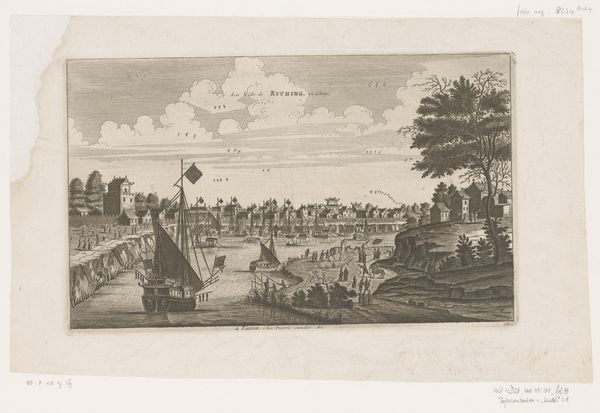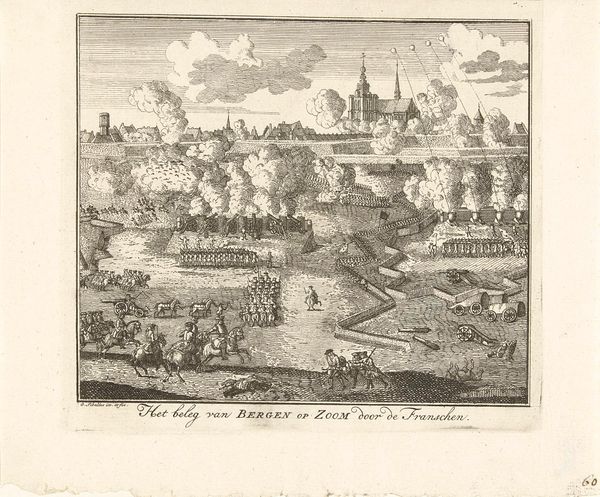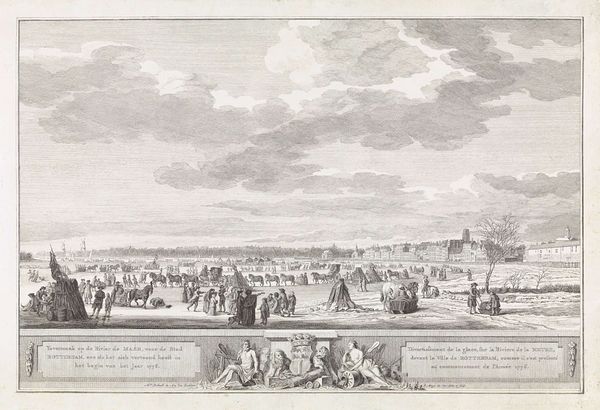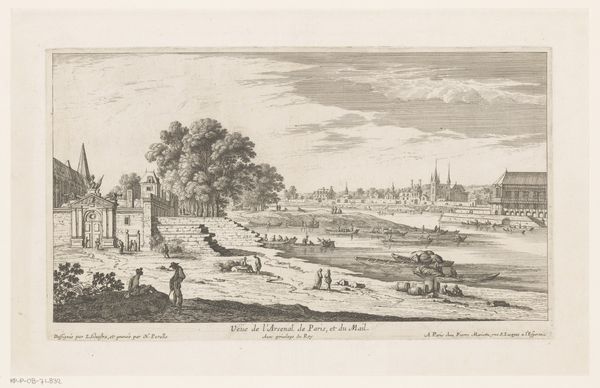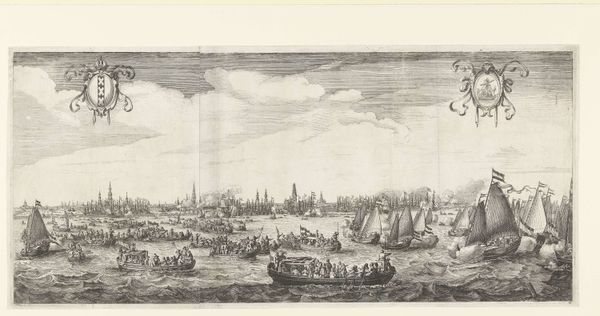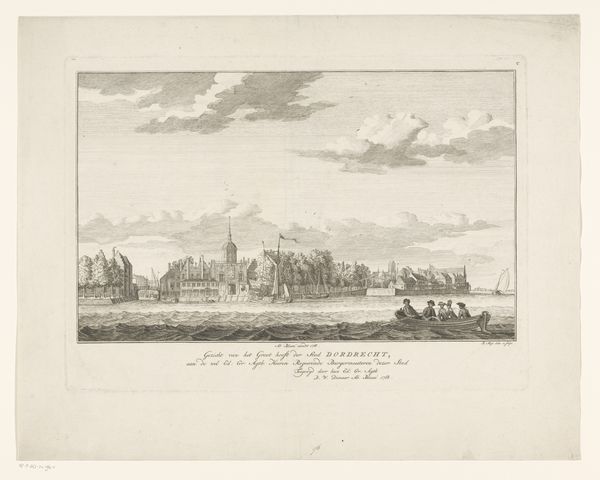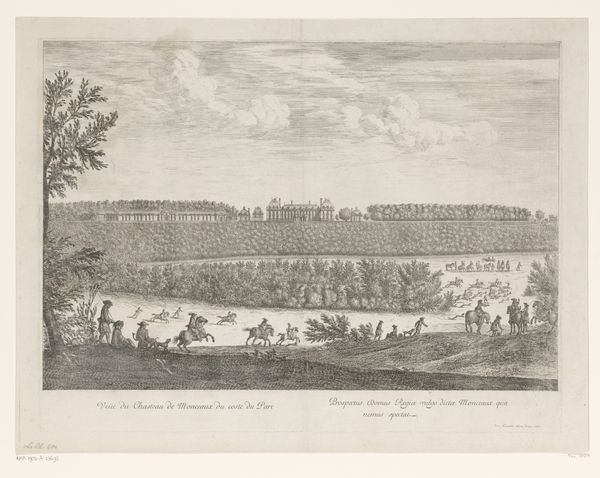
print, engraving
#
neoclacissism
# print
#
old engraving style
#
landscape
#
line
#
cityscape
#
history-painting
#
engraving
#
realism
Dimensions: height 221 mm, width 250 mm
Copyright: Rijks Museum: Open Domain
Editor: Here we have Reinier Vinkeles’ engraving, "Slag bij Jemappes, 1792," created in 1801. It’s incredibly detailed! The smoke and orderly lines of soldiers almost romanticize this scene of battle, though. What can you tell us about the history this print portrays and its artistic interpretation? Curator: This print depicts the Battle of Jemappes, a significant victory for the French Revolutionary army in 1792. Considering the date of the print, 1801, it’s not simply a neutral record. It's a piece of propaganda, celebrating the triumph of revolutionary ideals. Notice the landscape elements composed in the scene and how they subtly highlight the strength and order, especially those perfectly aligned marching troops, a strong neo-classical influence which aimed to visually convey ideas of revolutionary governance and the "natural order" of French governance, contrasted against what the Dutch citizens considered an attack of said moral code. Editor: Propaganda? That's interesting. I hadn't thought of it that way. I was more focused on its landscape perspective and realism. Curator: Well, consider the context. It was created during a period when the French sought to consolidate their influence. Art became a tool. It promoted specific ideas about progress and national strength. How might this print have been displayed or distributed, do you think, to further those aims? Editor: Maybe it was distributed to officials as reminders, hung in public places, or sold as emblems. So, its role in society went beyond being a picture! Curator: Precisely. It's also important to consider how the subject would have impacted the cultural perception and self-regard of its consumers, many of whom undoubtedly considered it a gross invasion. Analyzing historical prints in relation to its target audiences reveals rich data. Editor: Wow, seeing this piece with an eye on its cultural function completely shifts my understanding! Curator: Exactly! The politics of imagery play a huge role in how art shapes society and history. The art might tell us just as much about a consumer's perception, desires, and fears of political imagery as much as what it tries to project.
Comments
No comments
Be the first to comment and join the conversation on the ultimate creative platform.


